+ Open data
Open data
- Basic information
Basic information
| Entry | Database: PDB / ID: 3vfo | ||||||
|---|---|---|---|---|---|---|---|
| Title | crystal structure of HLA B*3508 LPEP157A, HLA mutant Ala157 | ||||||
 Components Components |
| ||||||
 Keywords Keywords | IMMUNE SYSTEM / HLA B*3508 / Epstein Barr virus / TCR / T cell / antigen-presenting molecule | ||||||
| Function / homology |  Function and homology information Function and homology informationsymbiont-mediated suppression of host tumor necrosis factor-mediated signaling pathway / symbiont-mediated perturbation of host cell cycle G0/G1 transition checkpoint / release from viral latency / symbiont-mediated suppression of host cytoplasmic pattern recognition receptor signaling pathway via inhibition of IRF7 activity / antigen processing and presentation of peptide antigen via MHC class I / symbiont-mediated perturbation of host cell cycle G1/S transition checkpoint / negative regulation of receptor binding / early endosome lumen / Nef mediated downregulation of MHC class I complex cell surface expression / DAP12 interactions ...symbiont-mediated suppression of host tumor necrosis factor-mediated signaling pathway / symbiont-mediated perturbation of host cell cycle G0/G1 transition checkpoint / release from viral latency / symbiont-mediated suppression of host cytoplasmic pattern recognition receptor signaling pathway via inhibition of IRF7 activity / antigen processing and presentation of peptide antigen via MHC class I / symbiont-mediated perturbation of host cell cycle G1/S transition checkpoint / negative regulation of receptor binding / early endosome lumen / Nef mediated downregulation of MHC class I complex cell surface expression / DAP12 interactions / transferrin transport / cellular response to iron ion / lumenal side of endoplasmic reticulum membrane / Endosomal/Vacuolar pathway / Antigen Presentation: Folding, assembly and peptide loading of class I MHC / peptide antigen assembly with MHC class II protein complex / cellular response to iron(III) ion / MHC class II protein complex / negative regulation of forebrain neuron differentiation / antigen processing and presentation of exogenous protein antigen via MHC class Ib, TAP-dependent / ER to Golgi transport vesicle membrane / peptide antigen assembly with MHC class I protein complex / regulation of iron ion transport / regulation of erythrocyte differentiation / HFE-transferrin receptor complex / response to molecule of bacterial origin / MHC class I peptide loading complex / T cell mediated cytotoxicity / positive regulation of T cell cytokine production / antigen processing and presentation of endogenous peptide antigen via MHC class I / antigen processing and presentation of exogenous peptide antigen via MHC class II / positive regulation of immune response / MHC class I protein complex / positive regulation of T cell activation / peptide antigen binding / positive regulation of receptor-mediated endocytosis / negative regulation of neurogenesis / cellular response to nicotine / positive regulation of T cell mediated cytotoxicity / multicellular organismal-level iron ion homeostasis / specific granule lumen / phagocytic vesicle membrane / recycling endosome membrane / Interferon gamma signaling / Immunoregulatory interactions between a Lymphoid and a non-Lymphoid cell / negative regulation of epithelial cell proliferation / MHC class II protein complex binding / Modulation by Mtb of host immune system / late endosome membrane / sensory perception of smell / positive regulation of cellular senescence / tertiary granule lumen / DAP12 signaling / T cell differentiation in thymus / negative regulation of neuron projection development / ER-Phagosome pathway / protein refolding / early endosome membrane / protein homotetramerization / sequence-specific DNA binding / amyloid fibril formation / intracellular iron ion homeostasis / learning or memory / protein dimerization activity / immune response / endoplasmic reticulum lumen / Amyloid fiber formation / DNA-binding transcription factor activity / Golgi membrane / lysosomal membrane / external side of plasma membrane / focal adhesion / Neutrophil degranulation / regulation of DNA-templated transcription / chromatin / positive regulation of DNA-templated transcription / host cell nucleus / SARS-CoV-2 activates/modulates innate and adaptive immune responses / structural molecule activity / cell surface / endoplasmic reticulum / Golgi apparatus / protein homodimerization activity / extracellular space / DNA binding / extracellular exosome / extracellular region / identical protein binding / membrane / plasma membrane / cytosol Similarity search - Function | ||||||
| Biological species |  Homo sapiens (human) Homo sapiens (human) | ||||||
| Method |  X-RAY DIFFRACTION / X-RAY DIFFRACTION /  SYNCHROTRON / SYNCHROTRON /  MOLECULAR REPLACEMENT / MOLECULAR REPLACEMENT /  molecular replacement / Resolution: 1.7 Å molecular replacement / Resolution: 1.7 Å | ||||||
 Authors Authors | Liu, Y.C. / Rossjohn, J. / Gras, S. | ||||||
 Citation Citation |  Journal: J.Biol.Chem. / Year: 2012 Journal: J.Biol.Chem. / Year: 2012Title: The Energetic Basis Underpinning T-cell Receptor Recognition of a Super-bulged Peptide Bound to a Major Histocompatibility Complex Class I Molecule. Authors: Liu, Y.C. / Chen, Z. / Burrows, S.R. / Purcell, A.W. / McCluskey, J. / Rossjohn, J. / Gras, S. | ||||||
| History |
|
- Structure visualization
Structure visualization
| Structure viewer | Molecule:  Molmil Molmil Jmol/JSmol Jmol/JSmol |
|---|
- Downloads & links
Downloads & links
- Download
Download
| PDBx/mmCIF format |  3vfo.cif.gz 3vfo.cif.gz | 104.9 KB | Display |  PDBx/mmCIF format PDBx/mmCIF format |
|---|---|---|---|---|
| PDB format |  pdb3vfo.ent.gz pdb3vfo.ent.gz | 78.8 KB | Display |  PDB format PDB format |
| PDBx/mmJSON format |  3vfo.json.gz 3vfo.json.gz | Tree view |  PDBx/mmJSON format PDBx/mmJSON format | |
| Others |  Other downloads Other downloads |
-Validation report
| Summary document |  3vfo_validation.pdf.gz 3vfo_validation.pdf.gz | 446.3 KB | Display |  wwPDB validaton report wwPDB validaton report |
|---|---|---|---|---|
| Full document |  3vfo_full_validation.pdf.gz 3vfo_full_validation.pdf.gz | 451.6 KB | Display | |
| Data in XML |  3vfo_validation.xml.gz 3vfo_validation.xml.gz | 21.5 KB | Display | |
| Data in CIF |  3vfo_validation.cif.gz 3vfo_validation.cif.gz | 32.3 KB | Display | |
| Arichive directory |  https://data.pdbj.org/pub/pdb/validation_reports/vf/3vfo https://data.pdbj.org/pub/pdb/validation_reports/vf/3vfo ftp://data.pdbj.org/pub/pdb/validation_reports/vf/3vfo ftp://data.pdbj.org/pub/pdb/validation_reports/vf/3vfo | HTTPS FTP |
-Related structure data
| Related structure data |  3vfmC 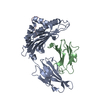 3vfnC 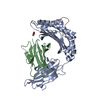 3vfpC 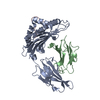 3vfrC  3vfsC  3vftC  3vfuC  3vfvC  3vfwC  1zhkS S: Starting model for refinement C: citing same article ( |
|---|---|
| Similar structure data |
- Links
Links
- Assembly
Assembly
| Deposited unit | 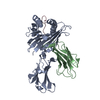
| ||||||||
|---|---|---|---|---|---|---|---|---|---|
| 1 |
| ||||||||
| Unit cell |
|
- Components
Components
| #1: Protein | Mass: 31898.168 Da / Num. of mol.: 1 / Mutation: R157A Source method: isolated from a genetically manipulated source Source: (gene. exp.)  Homo sapiens (human) / Gene: HLA-B / Plasmid: pET30 / Production host: Homo sapiens (human) / Gene: HLA-B / Plasmid: pET30 / Production host:  |
|---|---|
| #2: Protein | Mass: 11748.160 Da / Num. of mol.: 1 Source method: isolated from a genetically manipulated source Source: (gene. exp.)  Homo sapiens (human) / Gene: B2M, CDABP0092, HDCMA22P / Plasmid: pET30 / Production host: Homo sapiens (human) / Gene: B2M, CDABP0092, HDCMA22P / Plasmid: pET30 / Production host:  |
| #3: Protein/peptide | Mass: 1426.612 Da / Num. of mol.: 1 / Source method: obtained synthetically / Details: BL biochem / References: UniProt: P03206*PLUS |
| #4: Water | ChemComp-HOH / |
| Has protein modification | Y |
-Experimental details
-Experiment
| Experiment | Method:  X-RAY DIFFRACTION / Number of used crystals: 1 X-RAY DIFFRACTION / Number of used crystals: 1 |
|---|
- Sample preparation
Sample preparation
| Crystal | Density Matthews: 2.56 Å3/Da / Density % sol: 51.93 % |
|---|---|
| Crystal grow | Temperature: 293 K / Method: vapor diffusion, hanging drop / pH: 5.6 Details: 0.2M ammonium acetate, 16% PEG 4K, 0.1M sodium citrate pH5.6, vapor diffusion, hanging drop, temperature 293K |
-Data collection
| Diffraction | Mean temperature: 100 K |
|---|---|
| Diffraction source | Source:  SYNCHROTRON / Site: SYNCHROTRON / Site:  Australian Synchrotron Australian Synchrotron  / Beamline: MX1 / Wavelength: 0.9536 Å / Beamline: MX1 / Wavelength: 0.9536 Å |
| Detector | Type: ADSC QUANTUM 210 / Detector: CCD / Date: Apr 8, 2011 |
| Radiation | Protocol: SINGLE WAVELENGTH / Monochromatic (M) / Laue (L): M / Scattering type: x-ray |
| Radiation wavelength | Wavelength: 0.9536 Å / Relative weight: 1 |
| Reflection | Number: 307782 / Rmerge(I) obs: 0.058 / D res high: 1.7 Å / Num. obs: 47342 / % possible obs: 91.6 |
| Diffraction reflection shell | Highest resolution: 1.7 Å / Lowest resolution: 1.8 Å / Num. obs: 7925 / % possible obs: 99.4 % / Rmerge(I) obs: 0.252 |
| Reflection | Highest resolution: 1.7 Å / Num. obs: 47342 / % possible obs: 91.6 % / Observed criterion σ(I): -3 / Biso Wilson estimate: 21.87 Å2 / Rmerge(I) obs: 0.058 / Net I/σ(I): 20.32 |
| Reflection shell | Resolution: 1.7→1.8 Å / Rmerge(I) obs: 0.252 / Mean I/σ(I) obs: 5.58 / Num. measured obs: 47321 / Num. unique obs: 7925 / % possible all: 99.4 |
-Phasing
| Phasing | Method:  molecular replacement molecular replacement |
|---|
- Processing
Processing
| Software |
| ||||||||||||||||||||||||||||||||||||||||||||||||||||||||||||||||||||||||||||||||||||||||||||||||||||||||||||||||||||||||||||||
|---|---|---|---|---|---|---|---|---|---|---|---|---|---|---|---|---|---|---|---|---|---|---|---|---|---|---|---|---|---|---|---|---|---|---|---|---|---|---|---|---|---|---|---|---|---|---|---|---|---|---|---|---|---|---|---|---|---|---|---|---|---|---|---|---|---|---|---|---|---|---|---|---|---|---|---|---|---|---|---|---|---|---|---|---|---|---|---|---|---|---|---|---|---|---|---|---|---|---|---|---|---|---|---|---|---|---|---|---|---|---|---|---|---|---|---|---|---|---|---|---|---|---|---|---|---|---|---|
| Refinement | Method to determine structure:  MOLECULAR REPLACEMENT MOLECULAR REPLACEMENTStarting model: PDB ENTRY 1ZHK Resolution: 1.7→19.413 Å / Occupancy max: 1 / Occupancy min: 0 / FOM work R set: 0.8222 / SU ML: 0.59 / σ(F): 1.34 / Phase error: 24.42 / Stereochemistry target values: ML
| ||||||||||||||||||||||||||||||||||||||||||||||||||||||||||||||||||||||||||||||||||||||||||||||||||||||||||||||||||||||||||||||
| Solvent computation | Shrinkage radii: 0.72 Å / VDW probe radii: 1 Å / Solvent model: FLAT BULK SOLVENT MODEL / Bsol: 41.134 Å2 / ksol: 0.4 e/Å3 | ||||||||||||||||||||||||||||||||||||||||||||||||||||||||||||||||||||||||||||||||||||||||||||||||||||||||||||||||||||||||||||||
| Displacement parameters | Biso max: 62.34 Å2 / Biso mean: 17.8423 Å2 / Biso min: 3.55 Å2
| ||||||||||||||||||||||||||||||||||||||||||||||||||||||||||||||||||||||||||||||||||||||||||||||||||||||||||||||||||||||||||||||
| Refinement step | Cycle: LAST / Resolution: 1.7→19.413 Å
| ||||||||||||||||||||||||||||||||||||||||||||||||||||||||||||||||||||||||||||||||||||||||||||||||||||||||||||||||||||||||||||||
| Refine LS restraints |
| ||||||||||||||||||||||||||||||||||||||||||||||||||||||||||||||||||||||||||||||||||||||||||||||||||||||||||||||||||||||||||||||
| LS refinement shell | Refine-ID: X-RAY DIFFRACTION / Total num. of bins used: 17
|
 Movie
Movie Controller
Controller




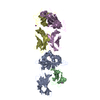






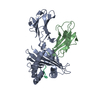



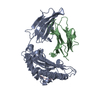
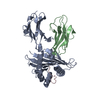
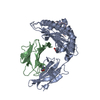

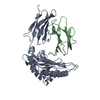
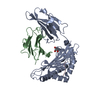


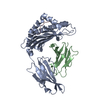
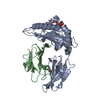
 PDBj
PDBj




